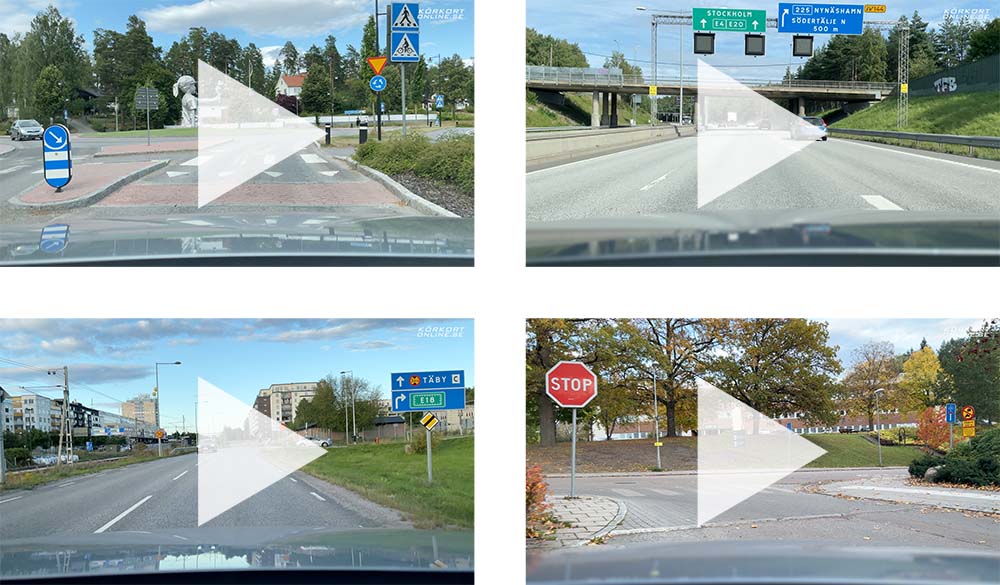Körkortonline > Theory & regulations > Roadworthiness tests
Roadworthiness test – information and facts regarding the roadworthiness test

Bilprovningen – one of several possible alternatives.
The roadworthiness test (inspection) is carried out in order to reduce the number of accidents caused by technical faults, and to prevent excessive emissions of harmful substances.
The roadworthiness test is obligatory in Sweden and is carried out by an approved testing company.
What is checked during the roadworthiness test
- Frame – that the car’s load-bearing structure has not been damaged by, for example, severe rusting.
- Wheels and control system – that there is no damage to the front or back wheels. The tyres’ condition and tread depth are also checked.
- Drive system – the engine, and the electrical, exhaust and drive systems.
- Brake system – the function, effectiveness and evenness of the brakes.
- Bodywork – seat belts, windows and doors.
- Communication – lights, indicators, horn, windscreen washer fluid and warning triangle.
- Environment – the exhaust emissions are compared with the threshold values.
- Other – towbar, instrument lights and speedometer.
How often and when the car shall be inspected
It often happens that one or more testing companies contact you when it is time for the roadworthiness test. The responsibility is however on you to ensure that the vehicle is inspected on time.
When the car shall be inspected
- A new car must be inspected for the first time no later than 3 years (36 months) after the month when it was first taken into service.
- The second inspection must be conducted no later than 2 years (24 months) after the month in which the first inspection was conducted.
- Subsequent inspections must be conducted no later than 14 months after the month in which the most recent inspection was conducted.
The last day for inspection is always the last day of the month.
Examples of inspection dates
- When is a car that was first registered on 2 April 2024 to undergo inspection?
- No later than 30 April 2027
- When is a car that was inspected for the first time on 5 October 2024 to undergo inspection again?
- No later than 31 October 2026
- Your car was made in 2017, and the last inspection was on 8 June 2025. When is the next inspection due?
- No later than 31 August 2026
More rules concerning roadworthiness tests
- If the inspection is not conducted during the prescribed period, a driving ban is automatically imposed on the vehicle until it is inspected.
- You must rectify any faults identified during the inspection. Otherwise, a driving ban will be imposed on the vehicle.
- A police officer or vehicle inspector has the right to check a vehicle at any time. This is known as a vehicle spot inspection.
- If the vehicle changes (for example, if the engine is replaced), it must be subjected to a registration inspection within 1 month. A registration inspection is thus different from a regular inspection (roadworthiness test).
Latest forum posts
Topic
Posts
Latest post
- << Safety checks
- Roadworthiness test ↑↑
- Service >>



